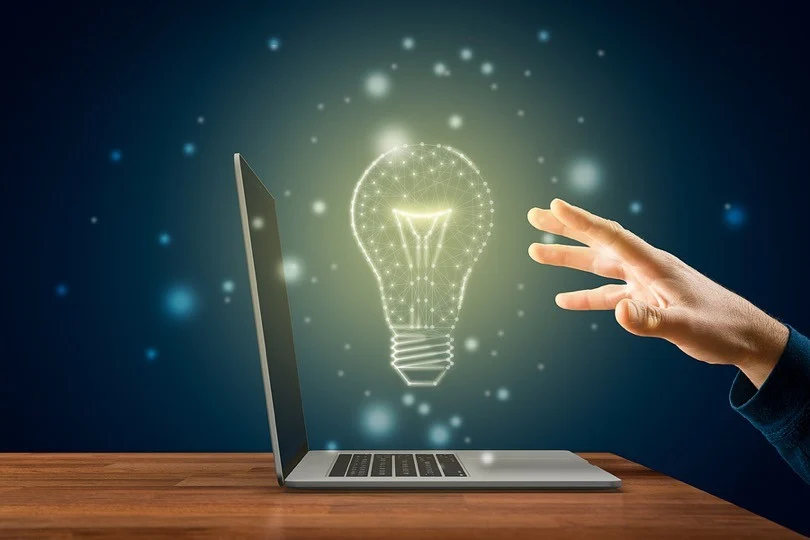Email design trends are constantly evolving, reflecting changes in technology, user behavior, and aesthetic preferences. Let’s dive into some of the most significant trends shaping email design in 2024.
-
Minimalist Design
Minimalism continues to dominate email design. Clean, uncluttered layouts with ample white space help to focus the reader’s attention on the key message. This trend is driven by the need for clarity and simplicity in a world overloaded with information. Minimalist designs often use a limited color palette, simple typography, and straightforward imagery.
-
Dark Mode Compatibility
With the increasing popularity of dark mode across various devices and applications, ensuring your emails look great in both light and dark modes is crucial. Dark mode can reduce eye strain and save battery life, making it a preferred choice for many users. Designers need to test their emails in both modes to ensure readability and visual appeal.
-
Interactive Elements
Interactive elements like carousels, accordions, and hover effects are becoming more common in email design. These elements can make emails more engaging and provide a richer user experience. For example, an interactive carousel can showcase multiple products without requiring the user to leave the email.
-
Personalization and Dynamic Content
Personalization goes beyond just addressing the recipient by their first name. Dynamic content allows for highly personalized emails that change based on the recipient’s behavior, preferences, and demographics. This can include product recommendations, personalized offers, and location-based content.
-
Animated GIFs and Micro-Animations
Animated GIFs and micro-animations can add a touch of fun and dynamism to emails. They can be used to draw attention to key elements, demonstrate product features, or simply add visual interest. However, it’s important to use animations sparingly to avoid overwhelming the reader.
-
Bold Typography
Bold and oversized typography can make a strong statement and help to convey the message quickly. This trend is particularly effective for headlines and key messages. Combining bold typography with minimalist design can create a striking and memorable email.
-
Accessibility
Designing for accessibility is no longer optional. Ensuring that emails are accessible to all users, including those with disabilities, is crucial. This includes using sufficient color contrast, providing alt text for images, and ensuring that the email is navigable with a keyboard.
-
Mobile-First Design
With the majority of emails being opened on mobile devices, designing with a mobile-first approach is essential. This means creating emails that are responsive and look great on all screen sizes. Key considerations include using a single-column layout, large touch-friendly buttons, and concise content.
-
Use of Illustrations
Custom illustrations can add a unique and personal touch to emails. They can help to convey complex ideas in a simple and visually appealing way. Illustrations can also be used to create a cohesive brand identity across different marketing channels.
-
Data-Driven Design
Using data to inform design decisions is becoming increasingly important. Analyzing metrics such as open rates, click-through rates, and conversion rates can provide valuable insights into what works and what doesn’t. This data can then be used to optimize future email campaigns.
-
Storytelling
Storytelling is a powerful tool in email marketing. Crafting a compelling narrative can engage readers and create an emotional connection with the brand. This can be achieved through a combination of text, images, and videos.
-
Sustainability Messaging
As consumers become more environmentally conscious, incorporating sustainability messaging into email design is a growing trend. This can include highlighting eco-friendly products, sharing sustainability initiatives, and encouraging green practices.
-
User-Generated Content
Featuring user-generated content (UGC) in emails can build trust and authenticity. This can include customer reviews, testimonials, and social media posts. UGC can provide social proof and encourage other customers to engage with the brand.
-
Seamless Integration with Other Channels
Integrating email marketing with other channels such as social media, SMS, and web push notifications can create a cohesive and unified customer experience. This can help to reinforce the message and increase engagement across different touchpoints.
-
AI and Machine Learning
AI and machine learning are playing an increasingly important role in email design. These technologies can be used to personalize content, optimize send times, and predict customer behavior. AI can also help to automate A/B testing and provide insights into what design elements are most effective.
Staying on top of email design trends is essential for creating effective and engaging email campaigns. By incorporating these trends into your email design strategy, you can improve the user experience, increase engagement, and achieve better results. Whether it’s through minimalist design, interactive elements, or personalized content, the key is to keep the user at the center of your design decisions.
